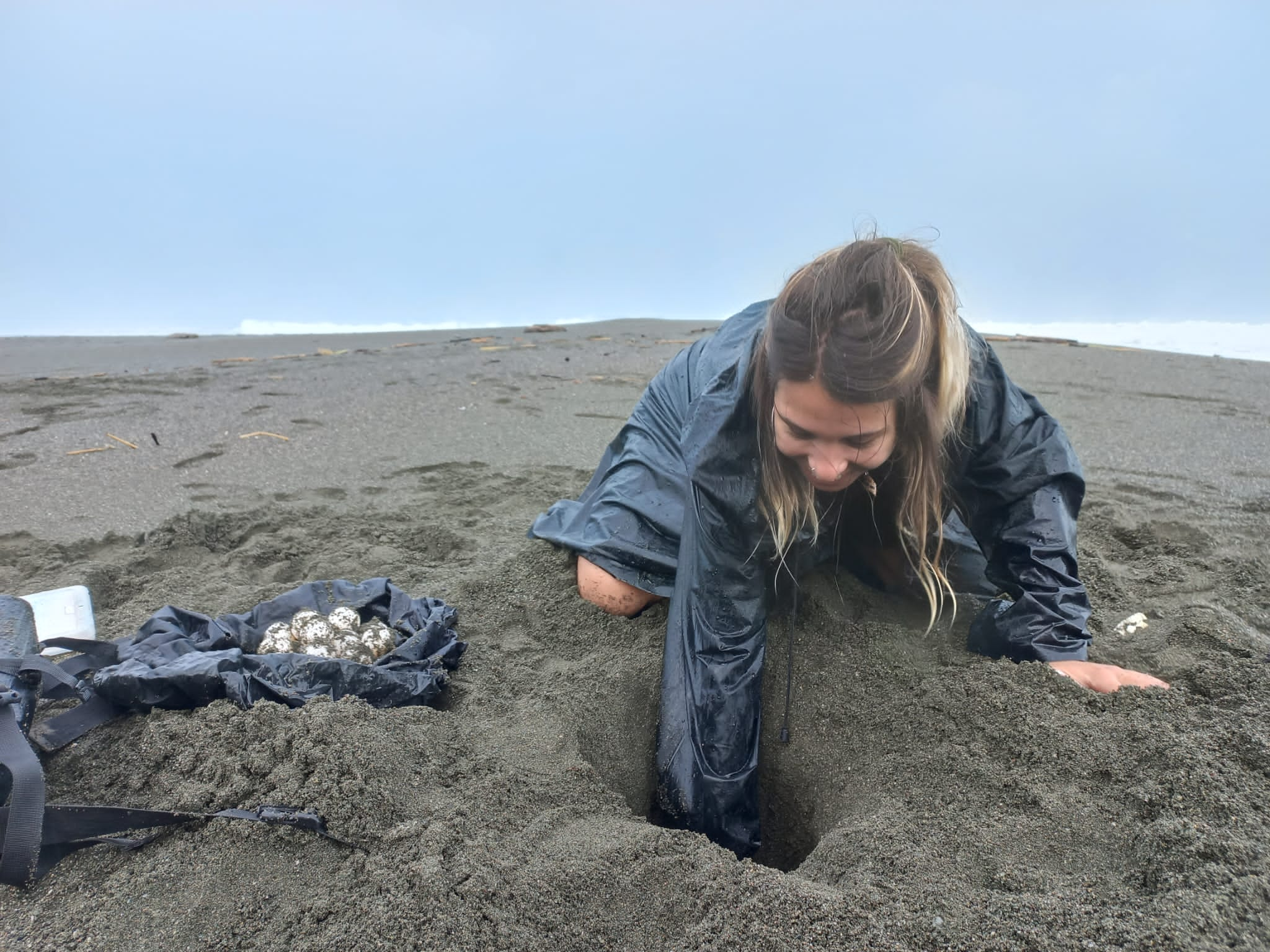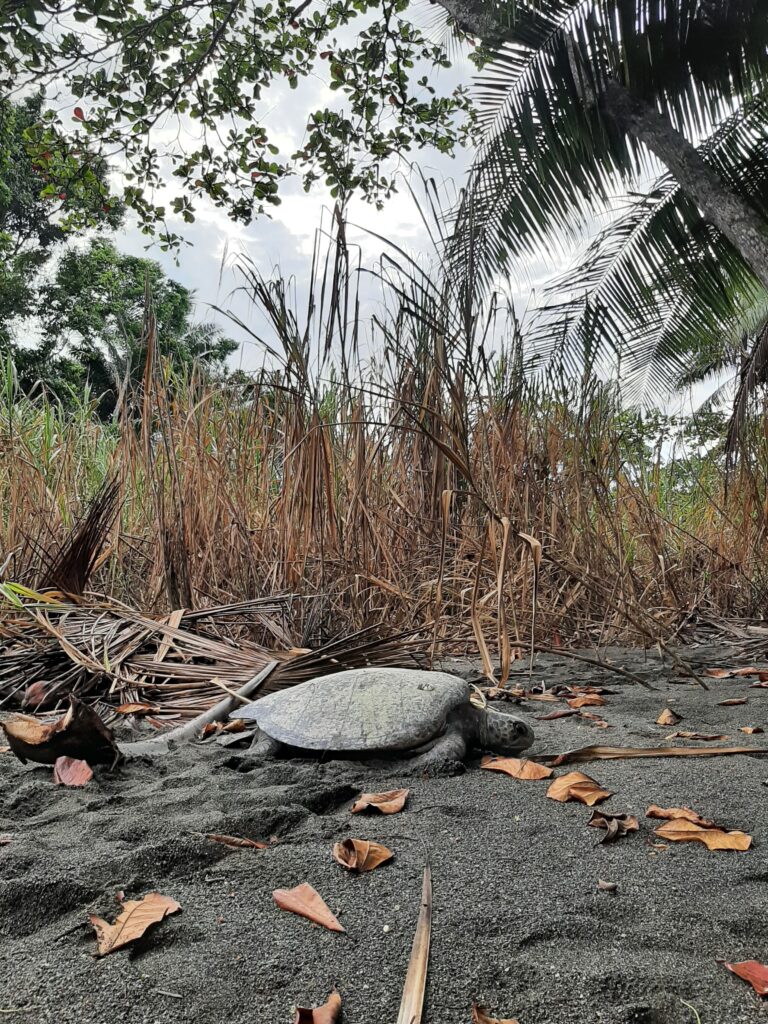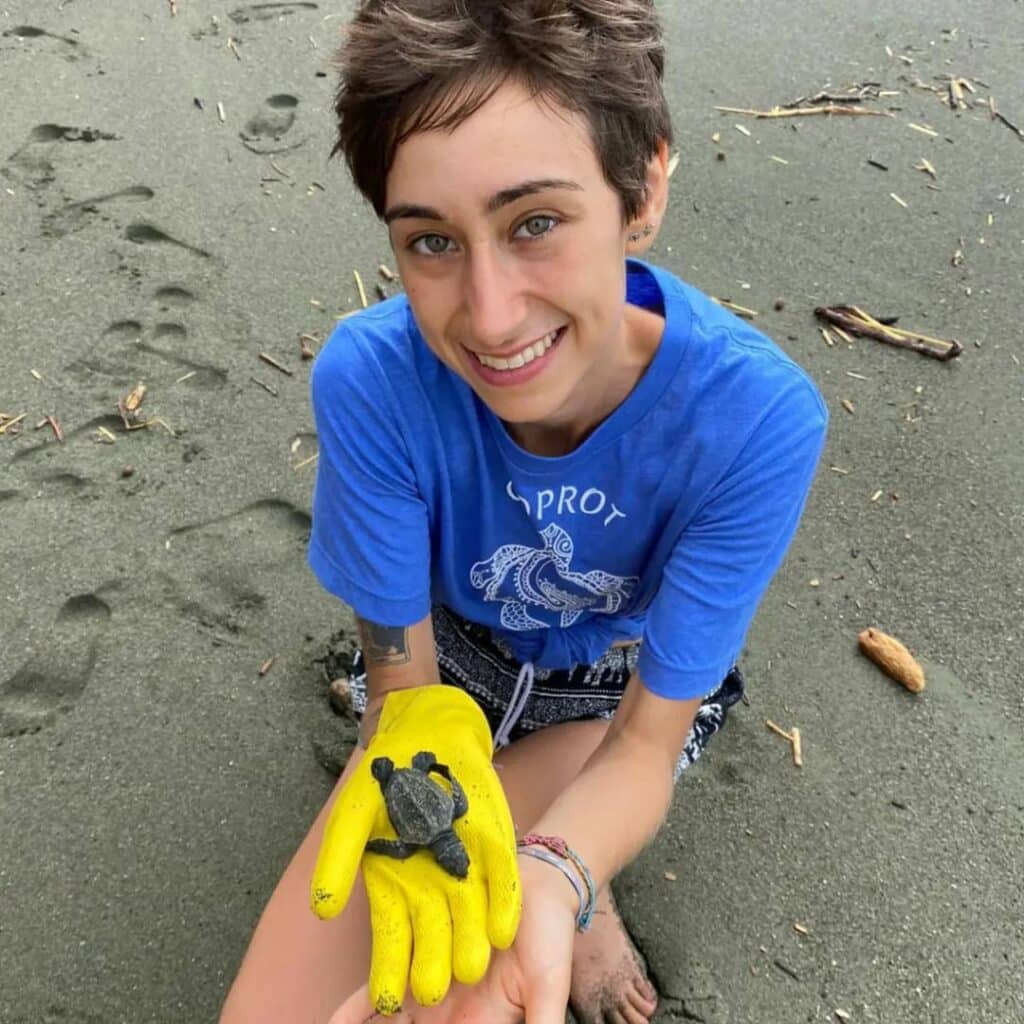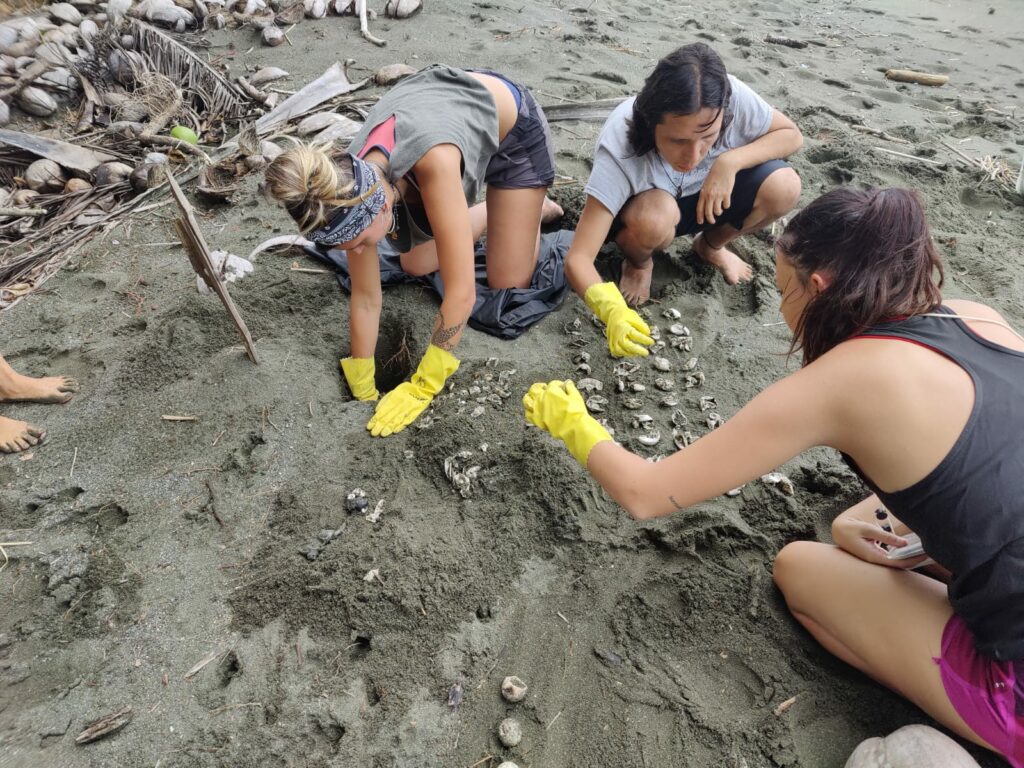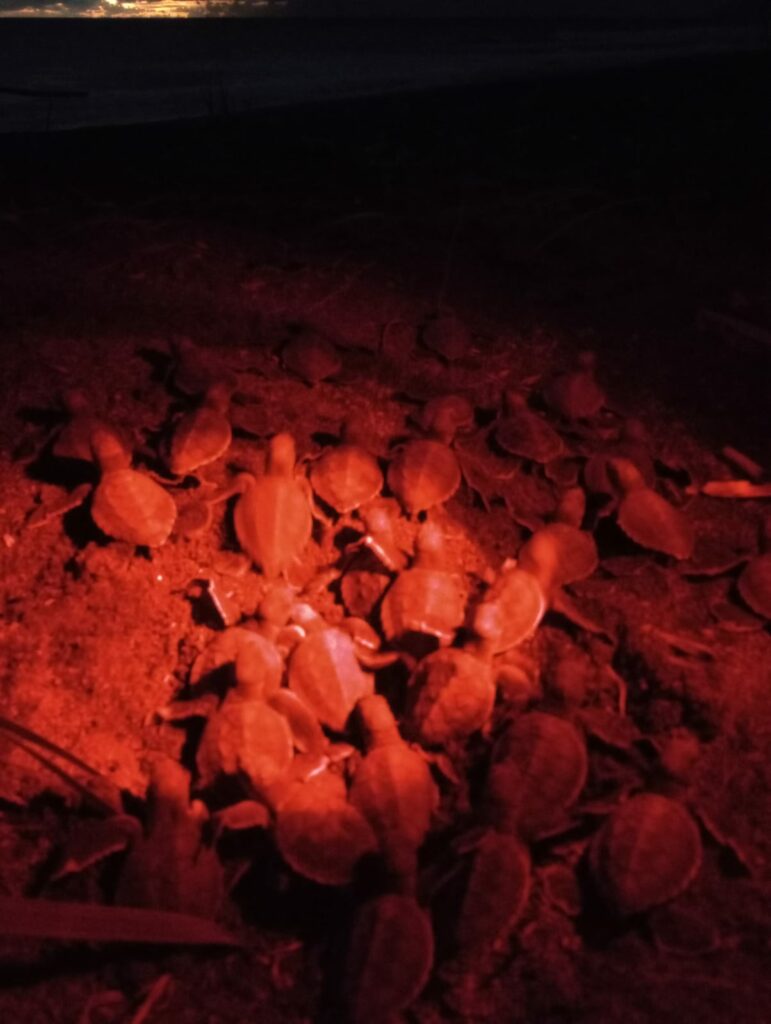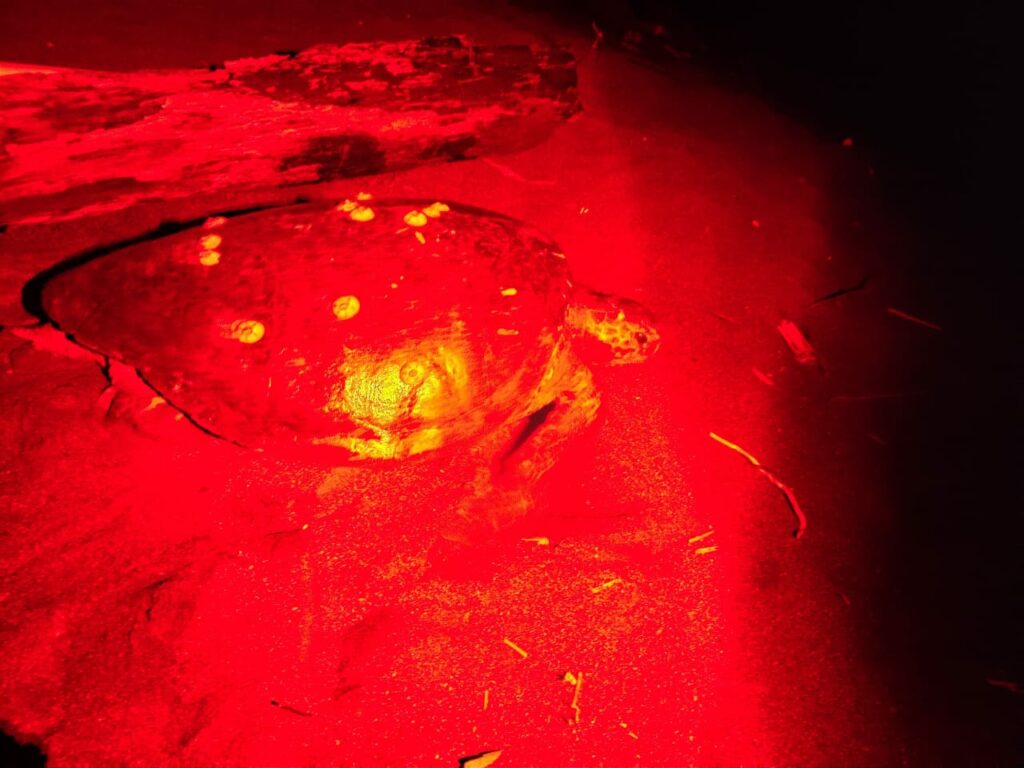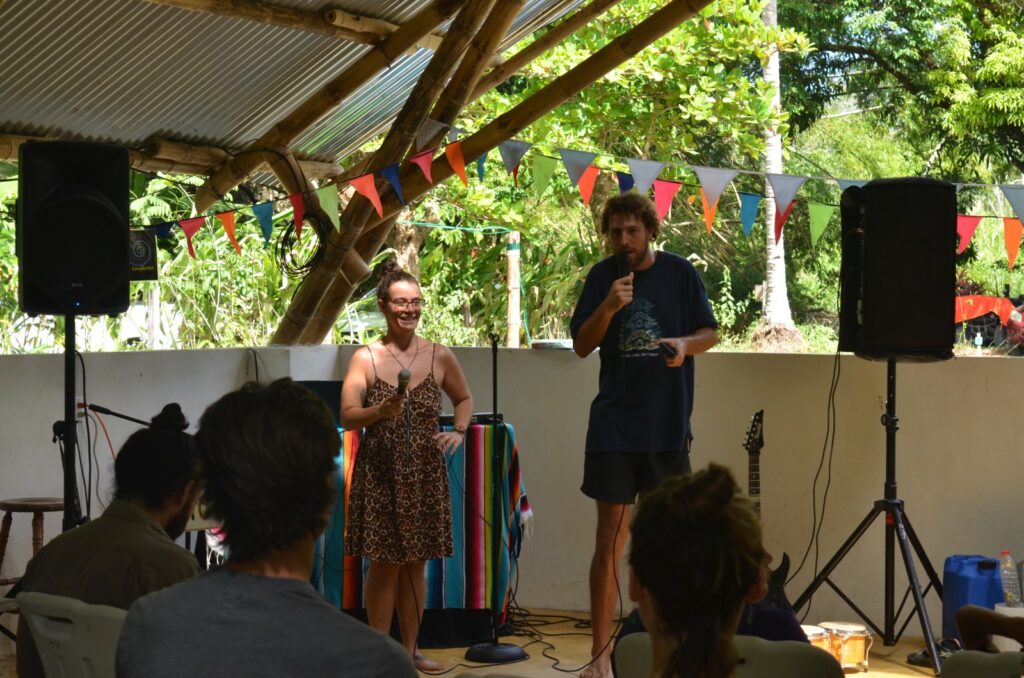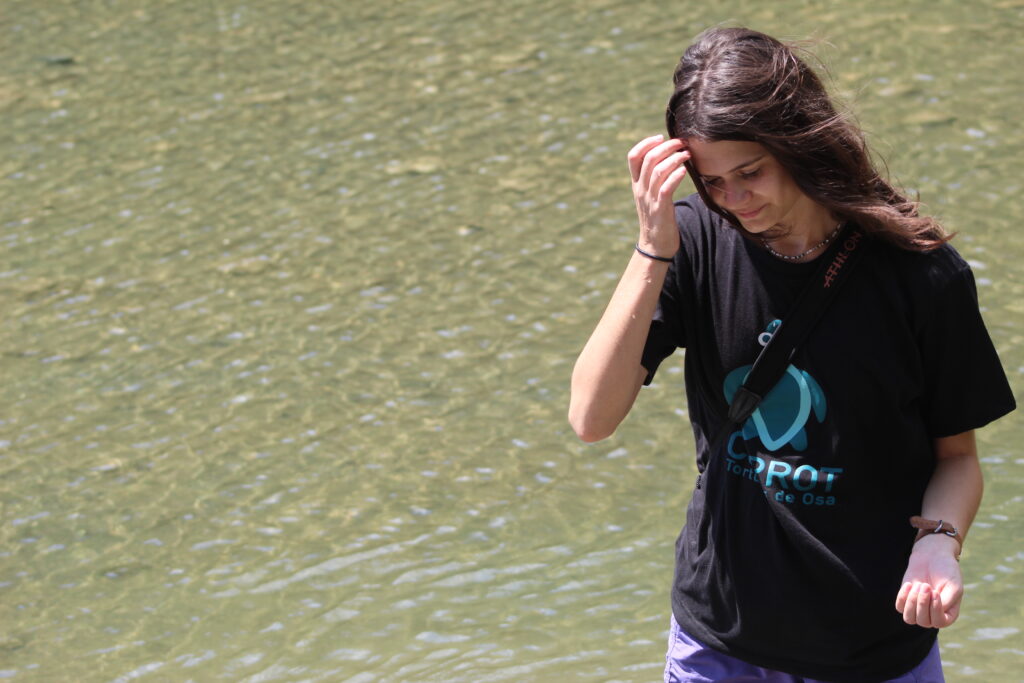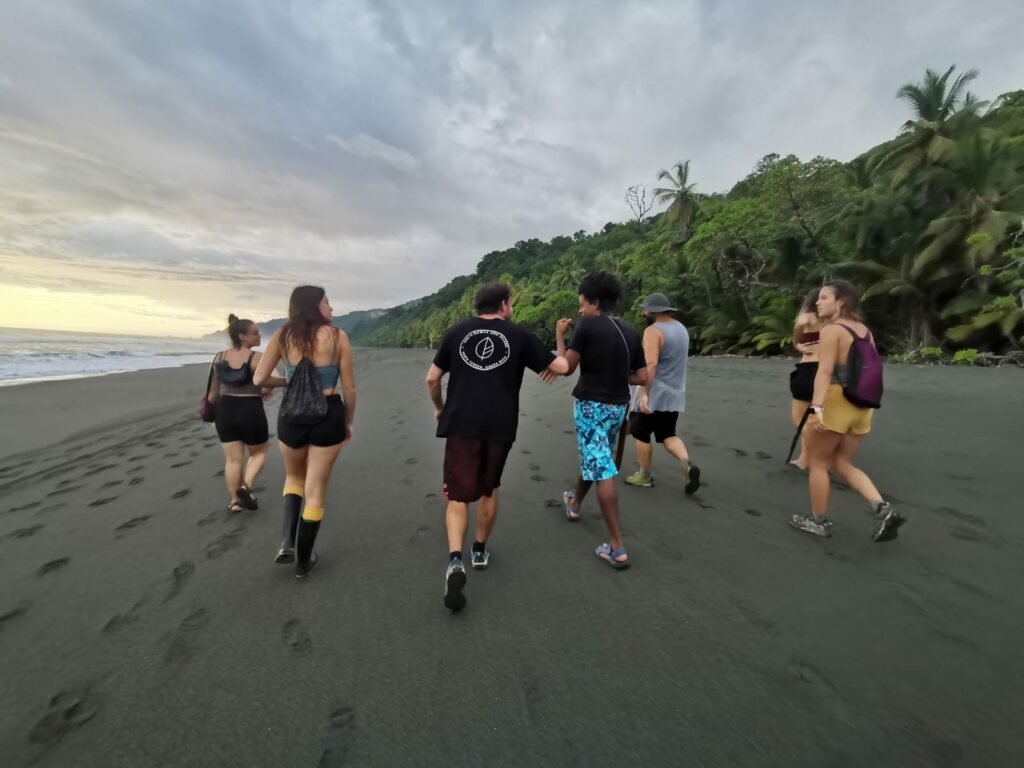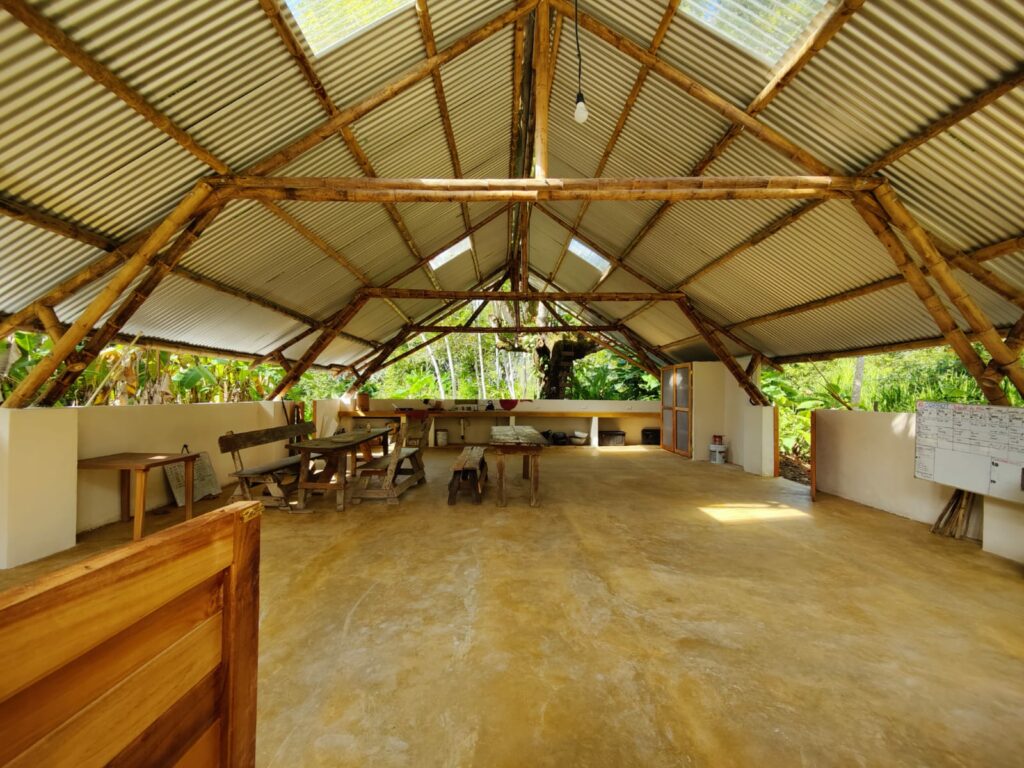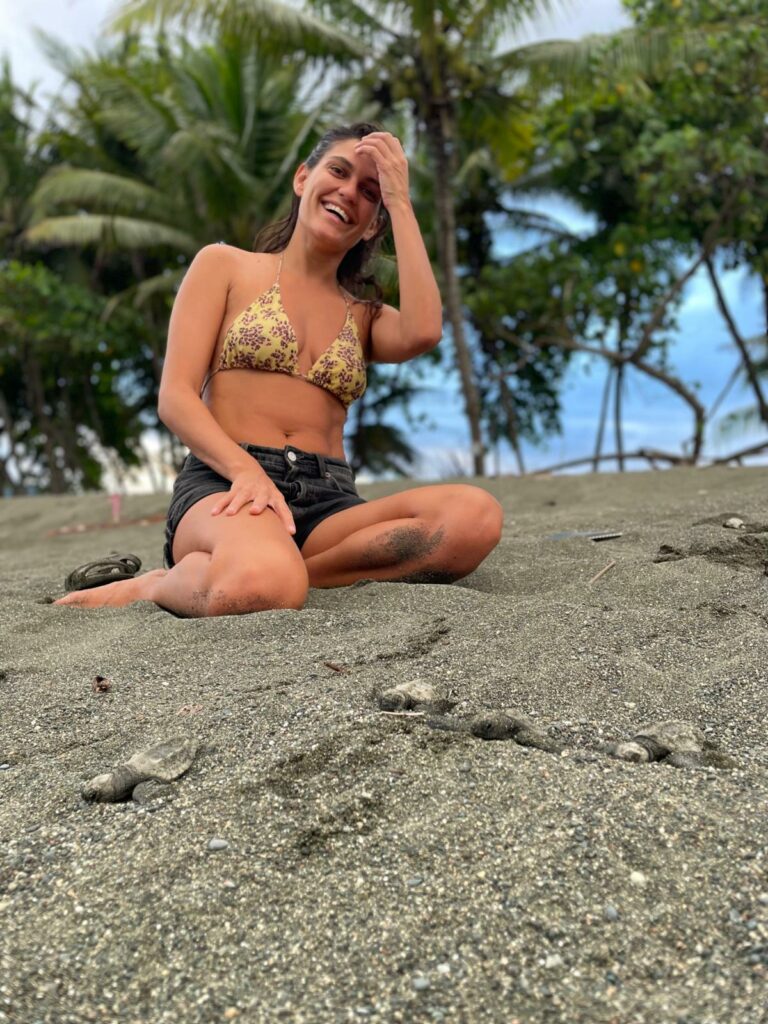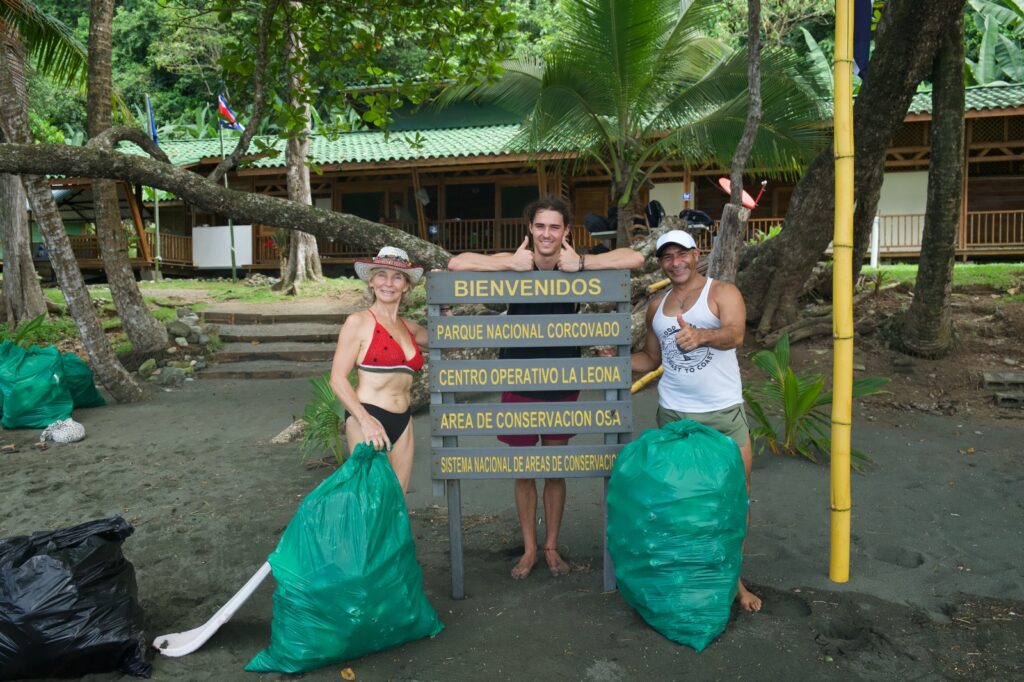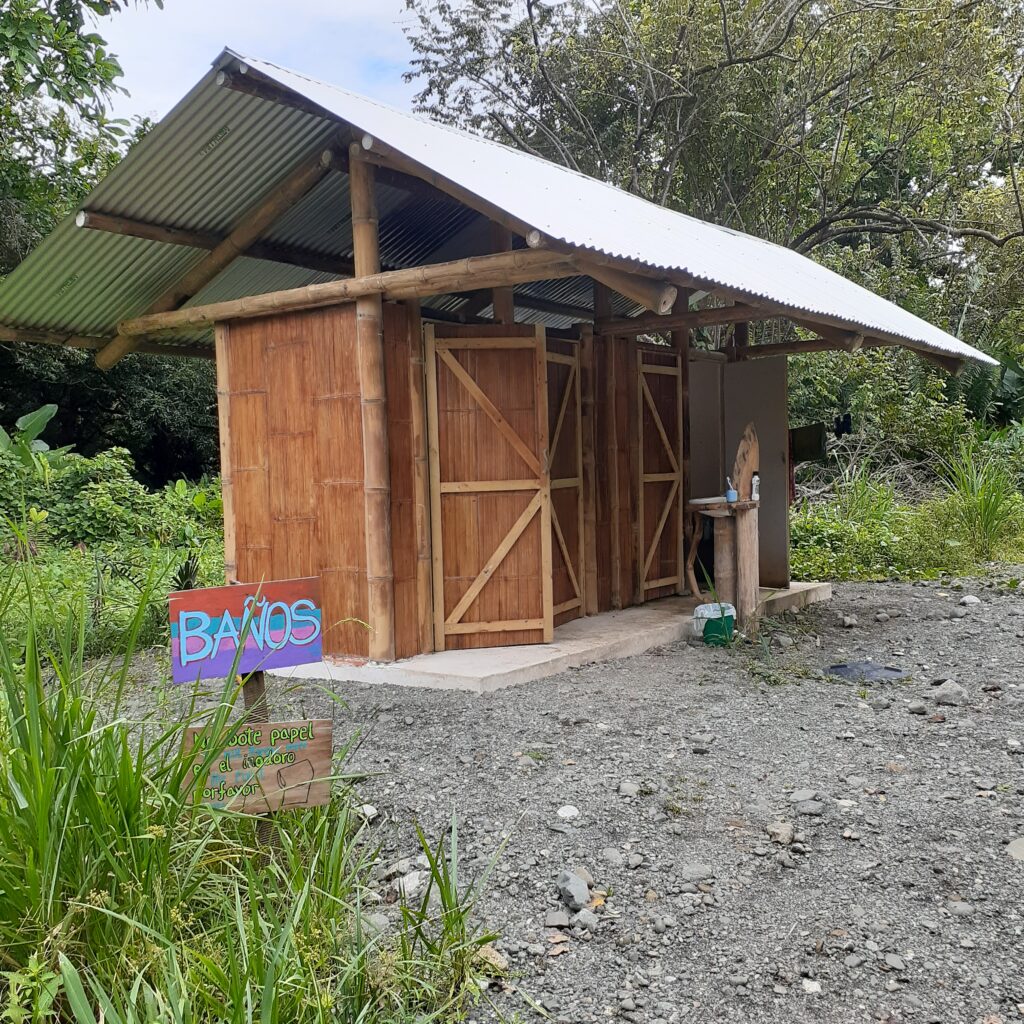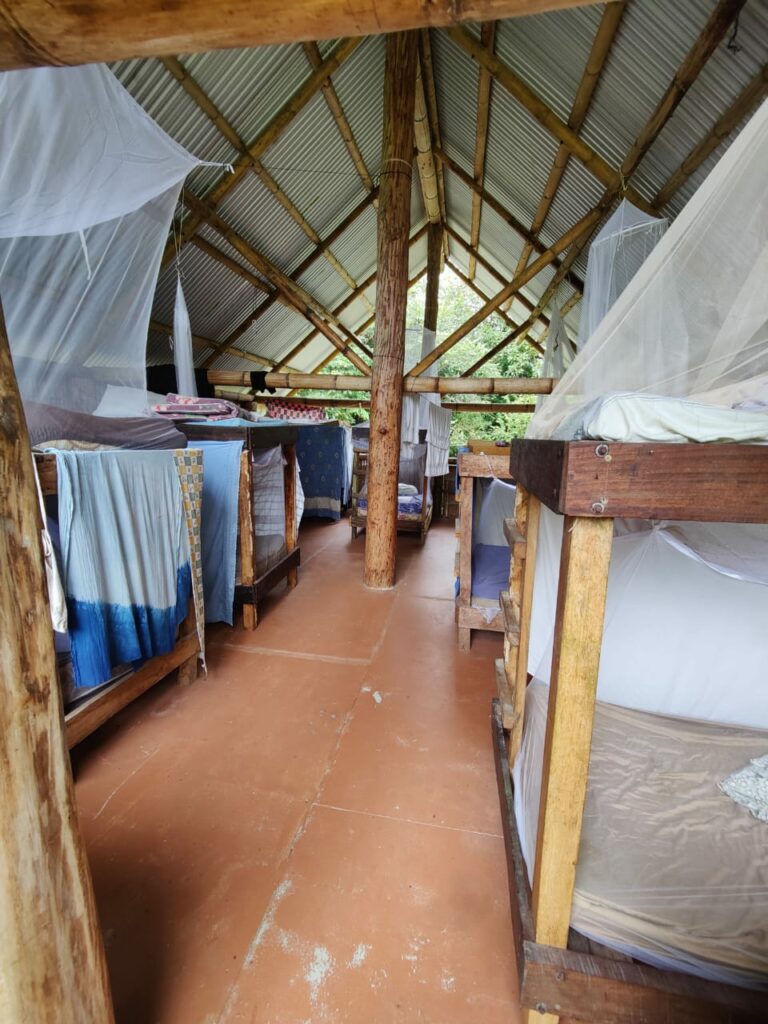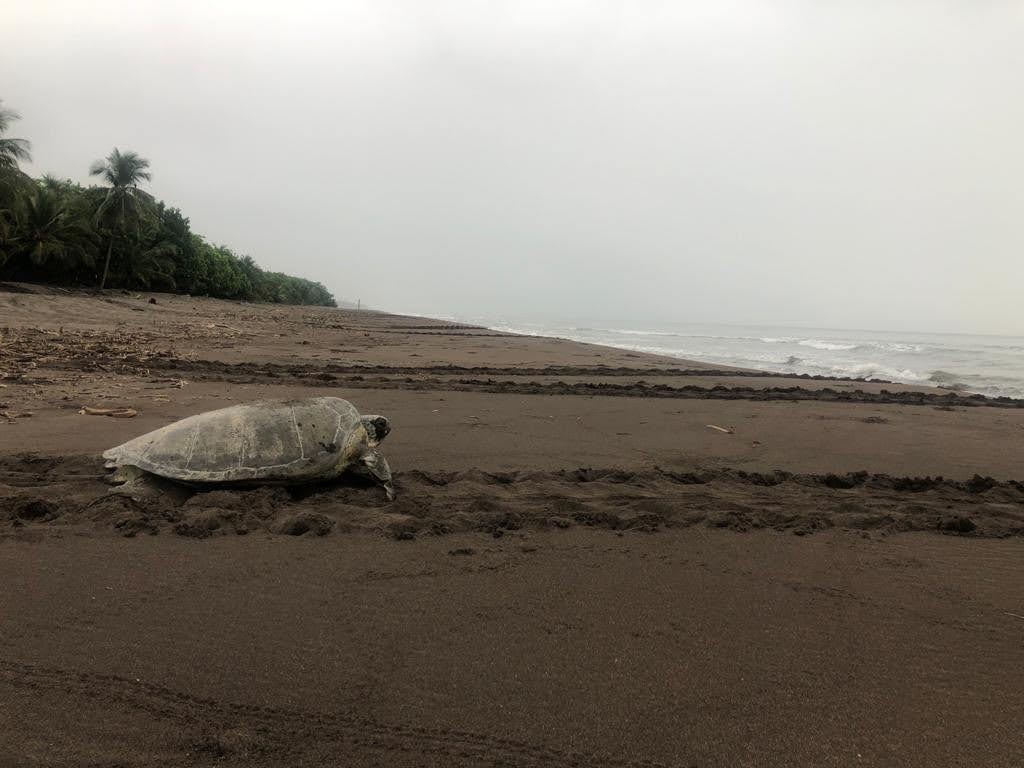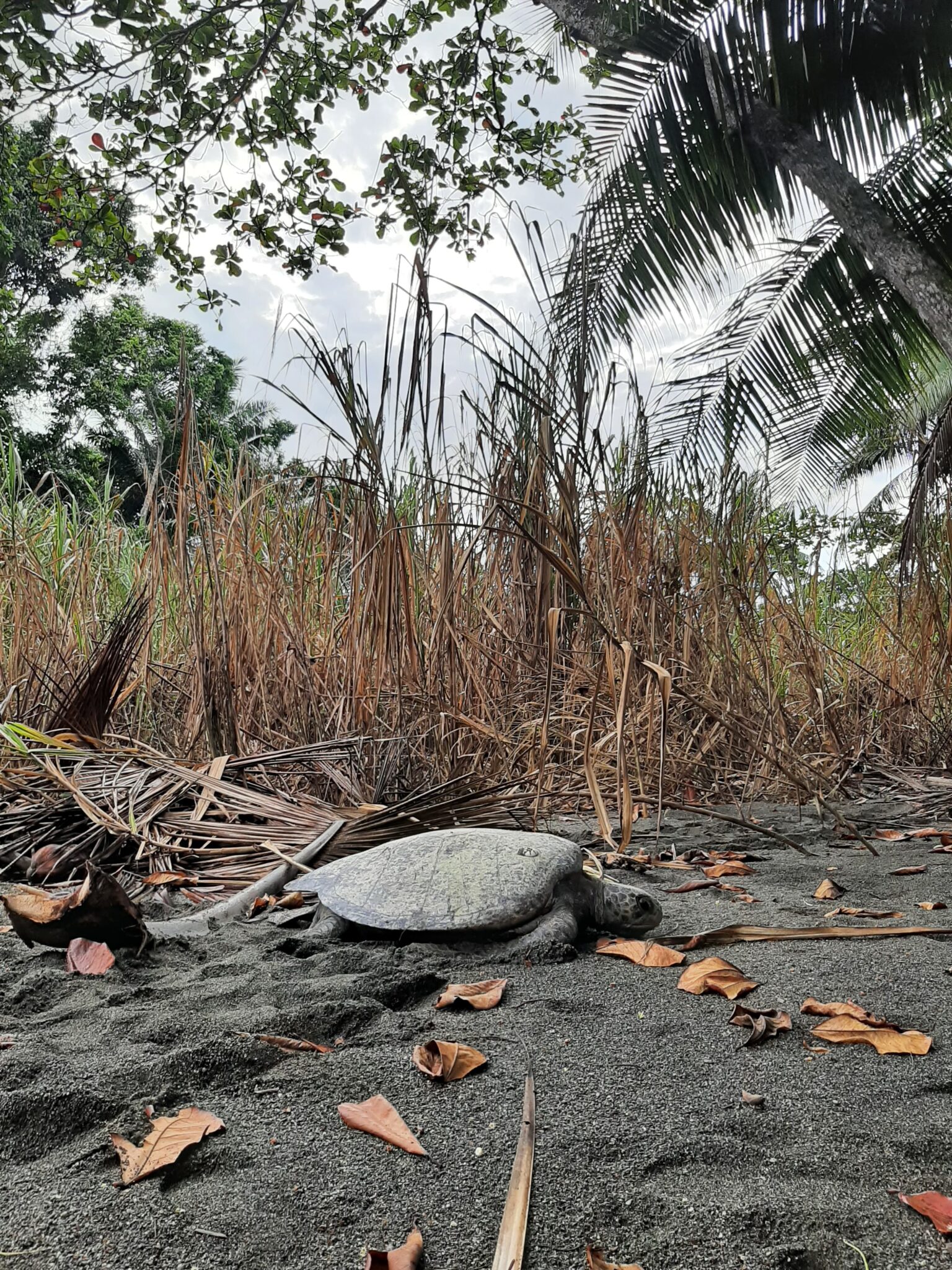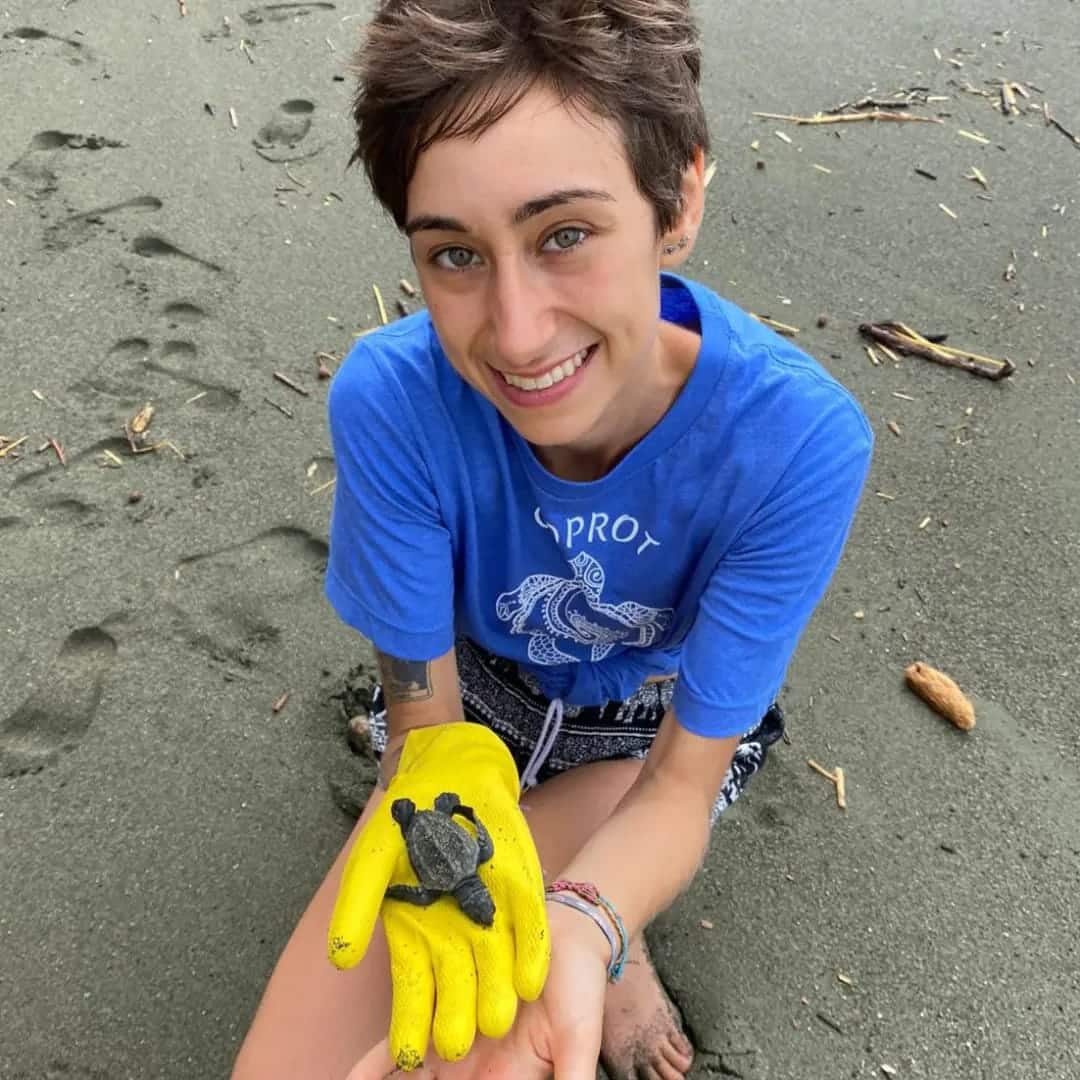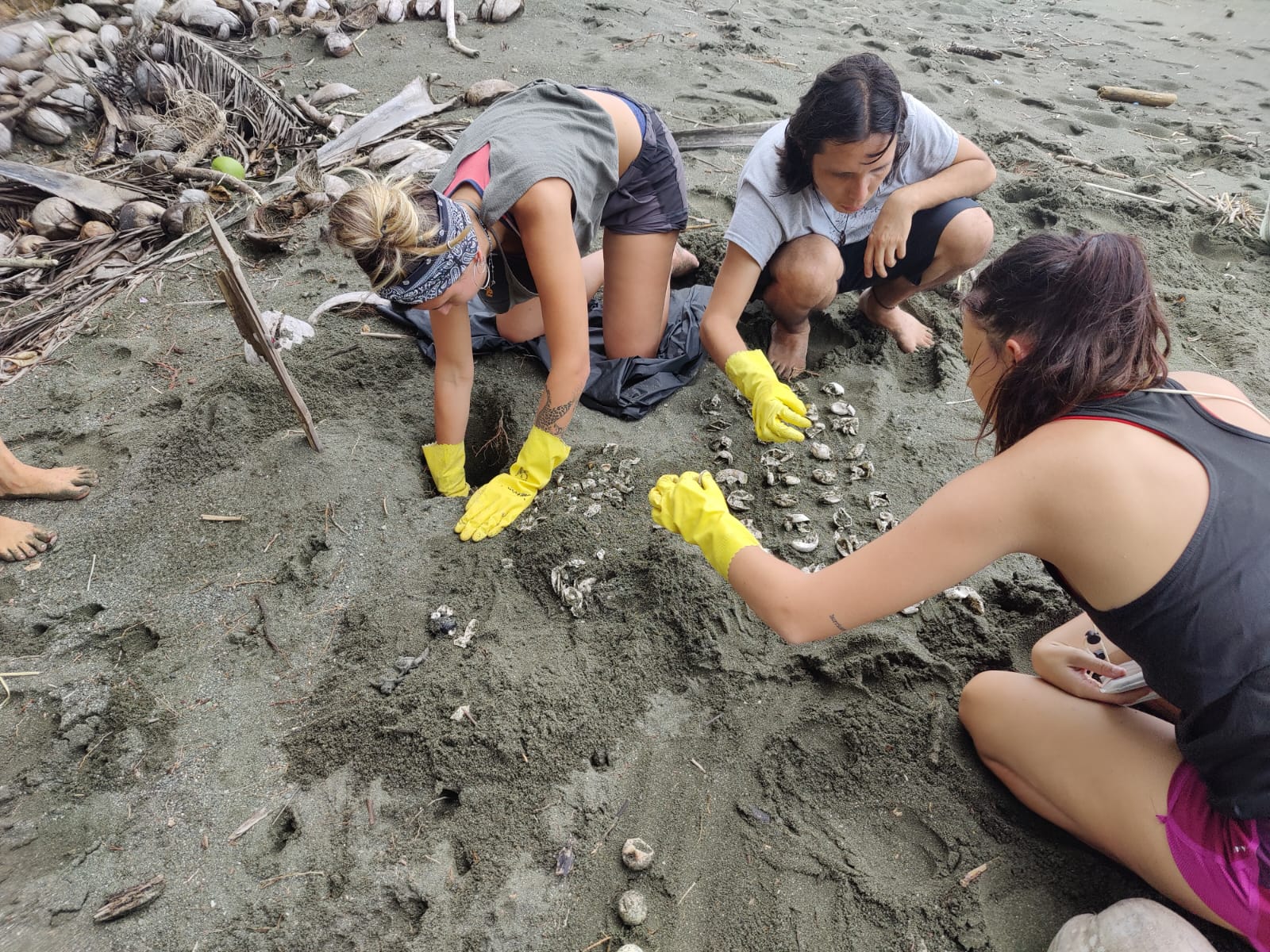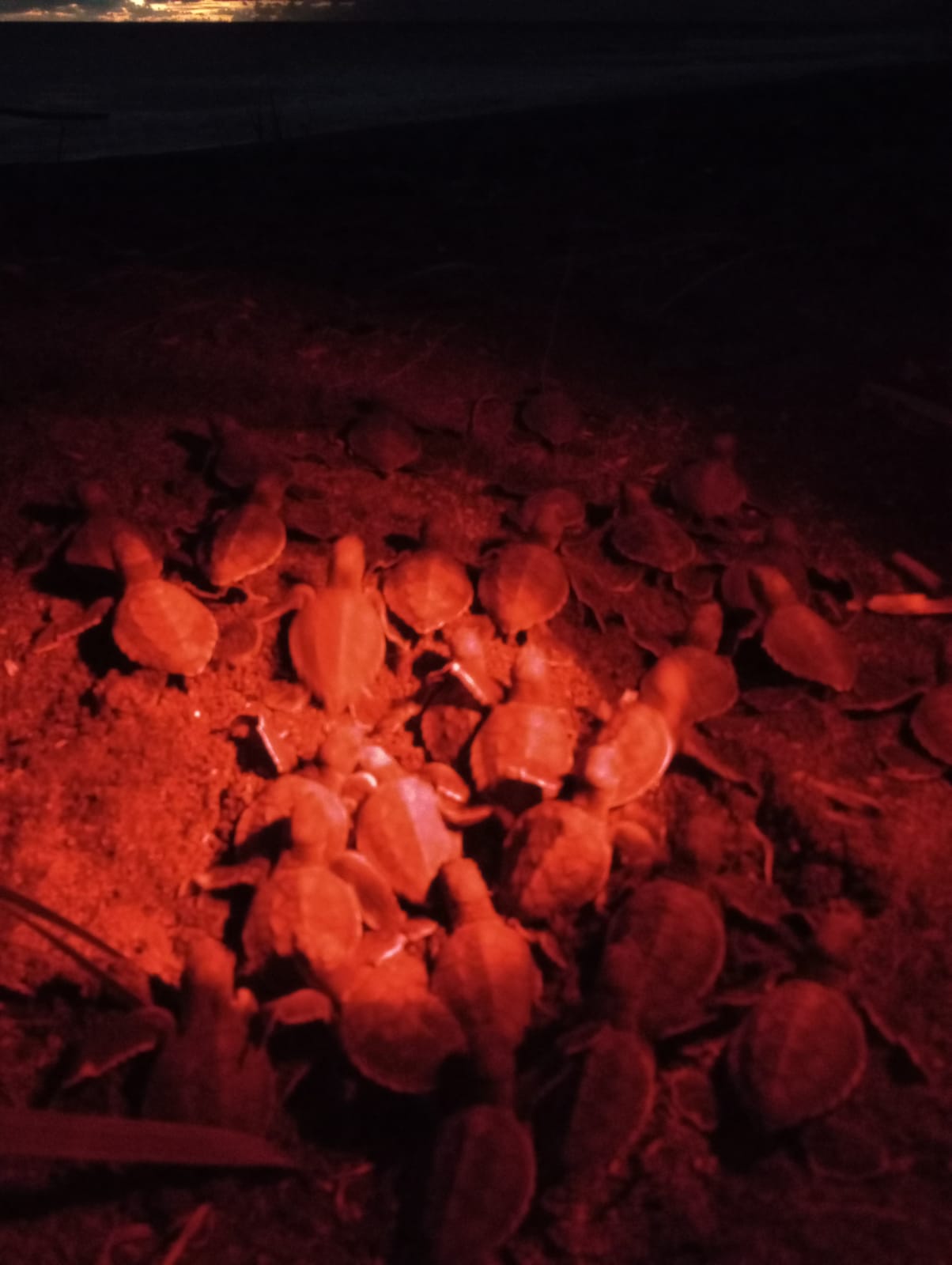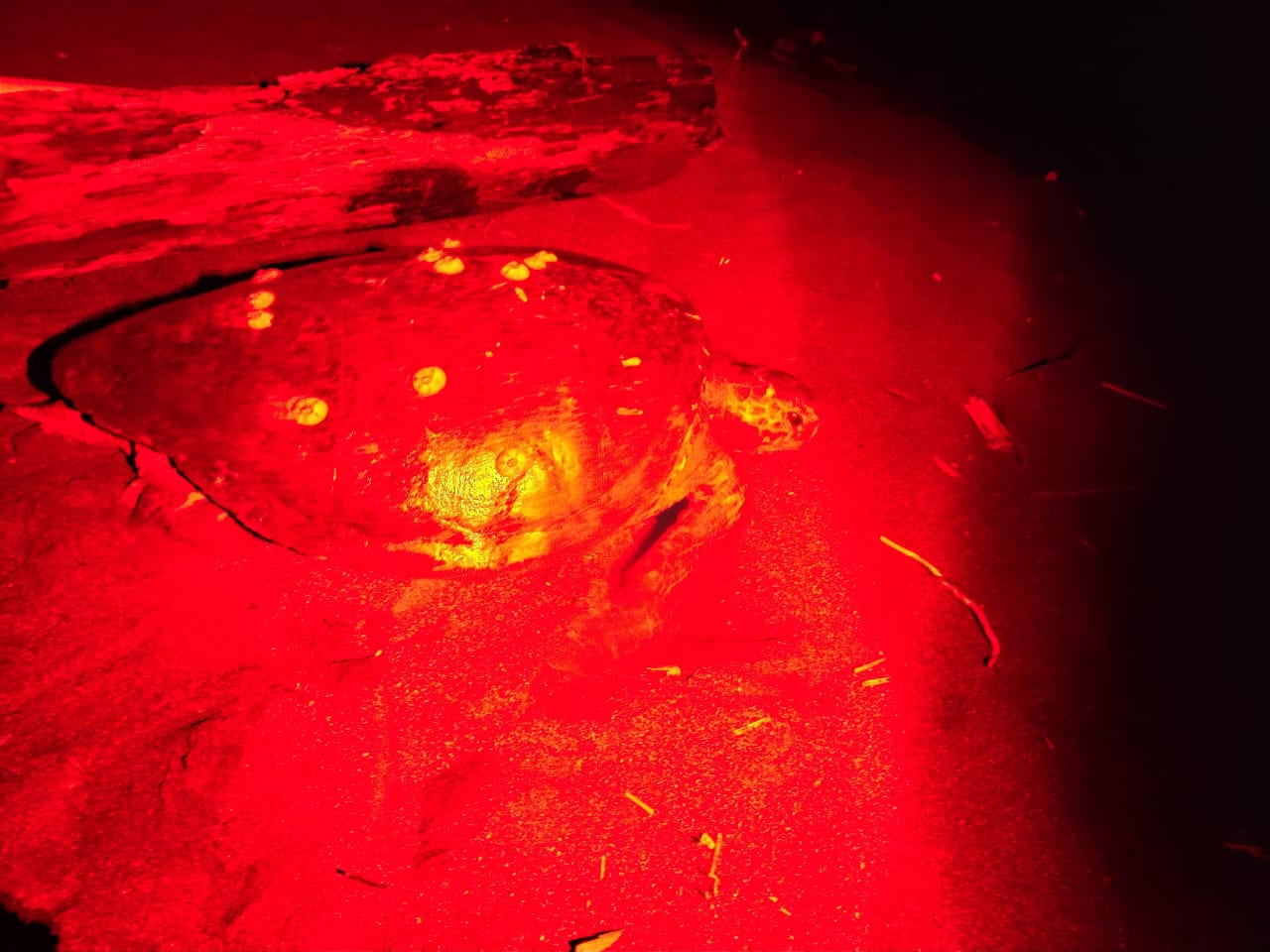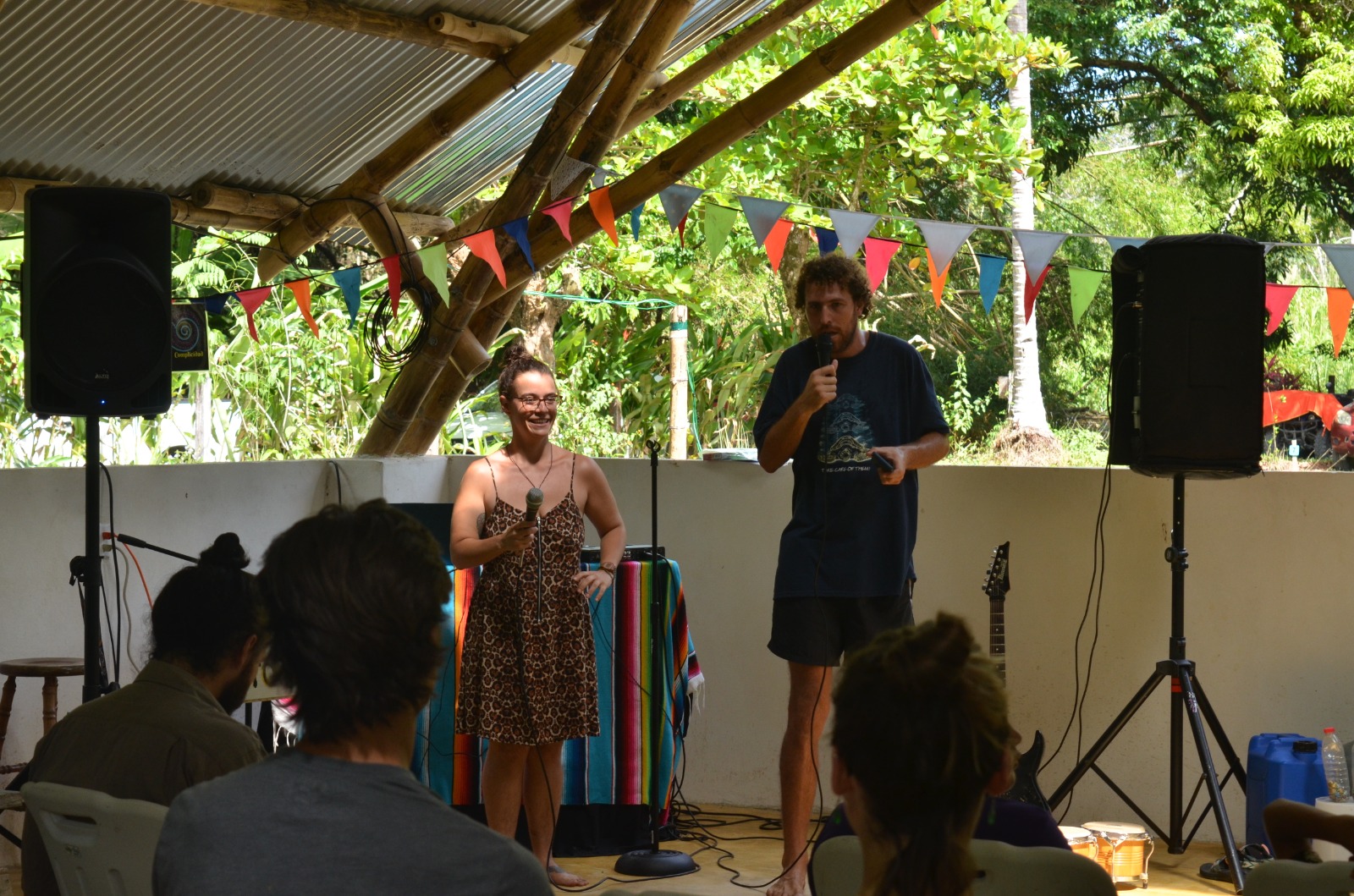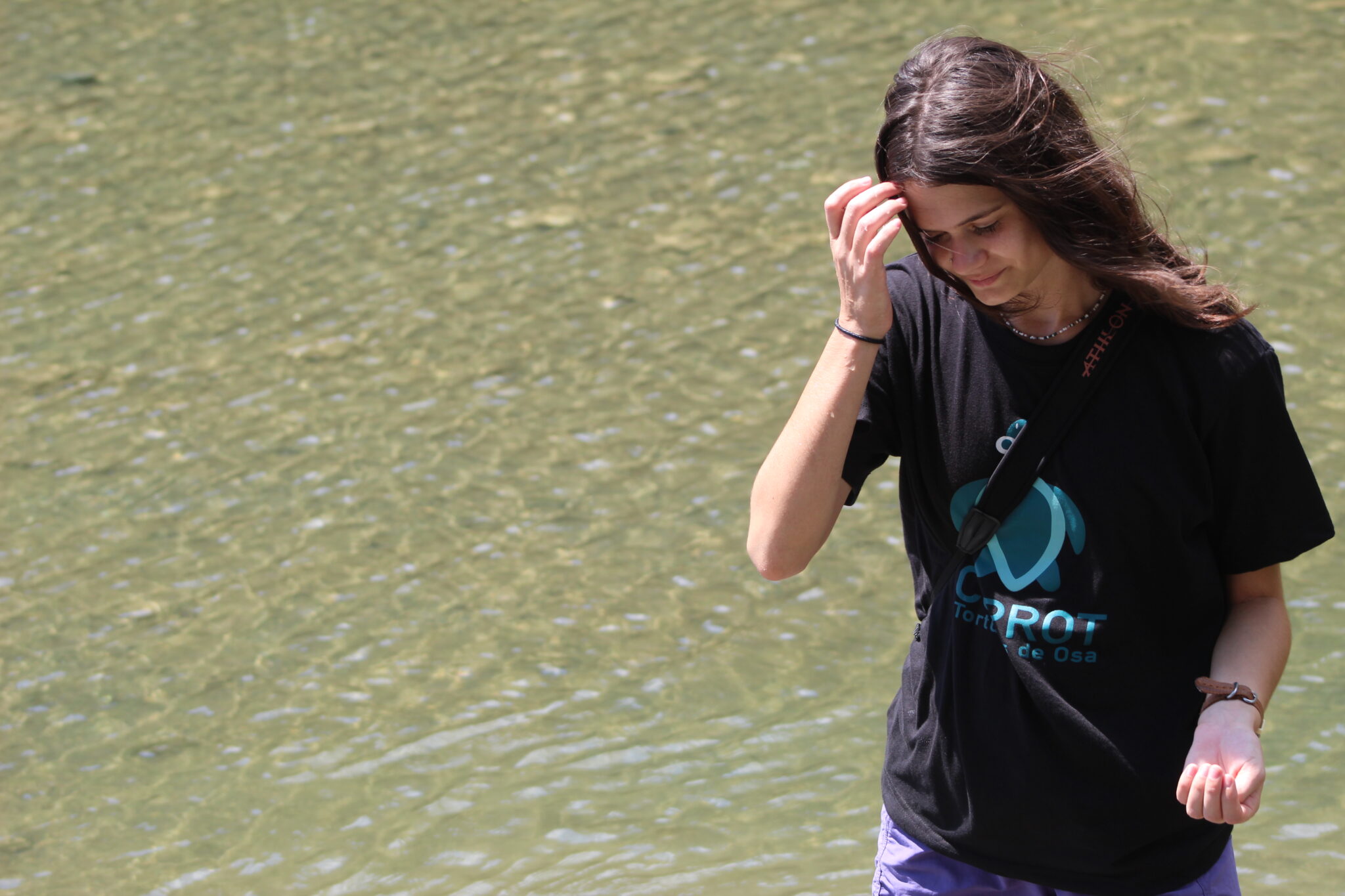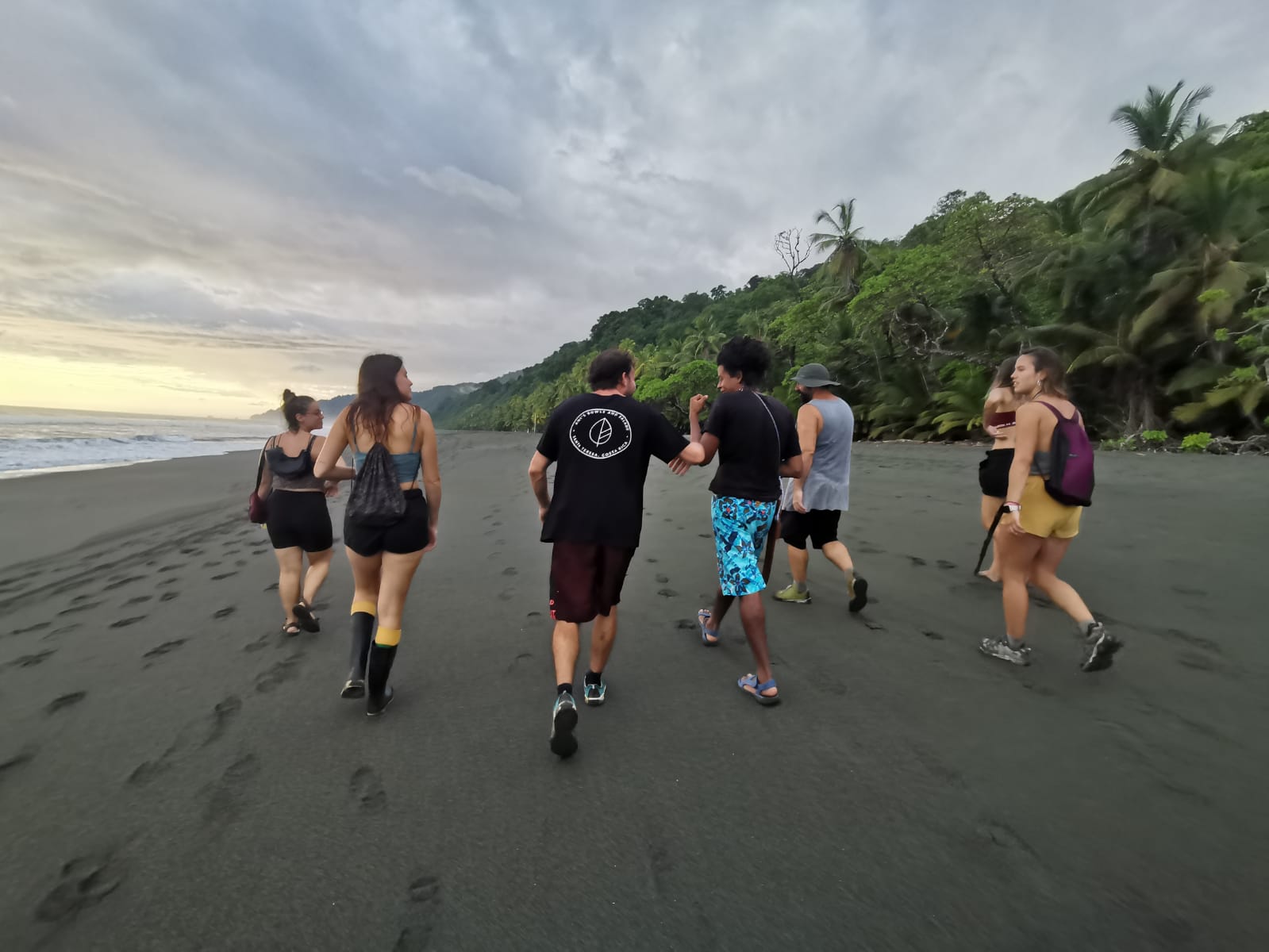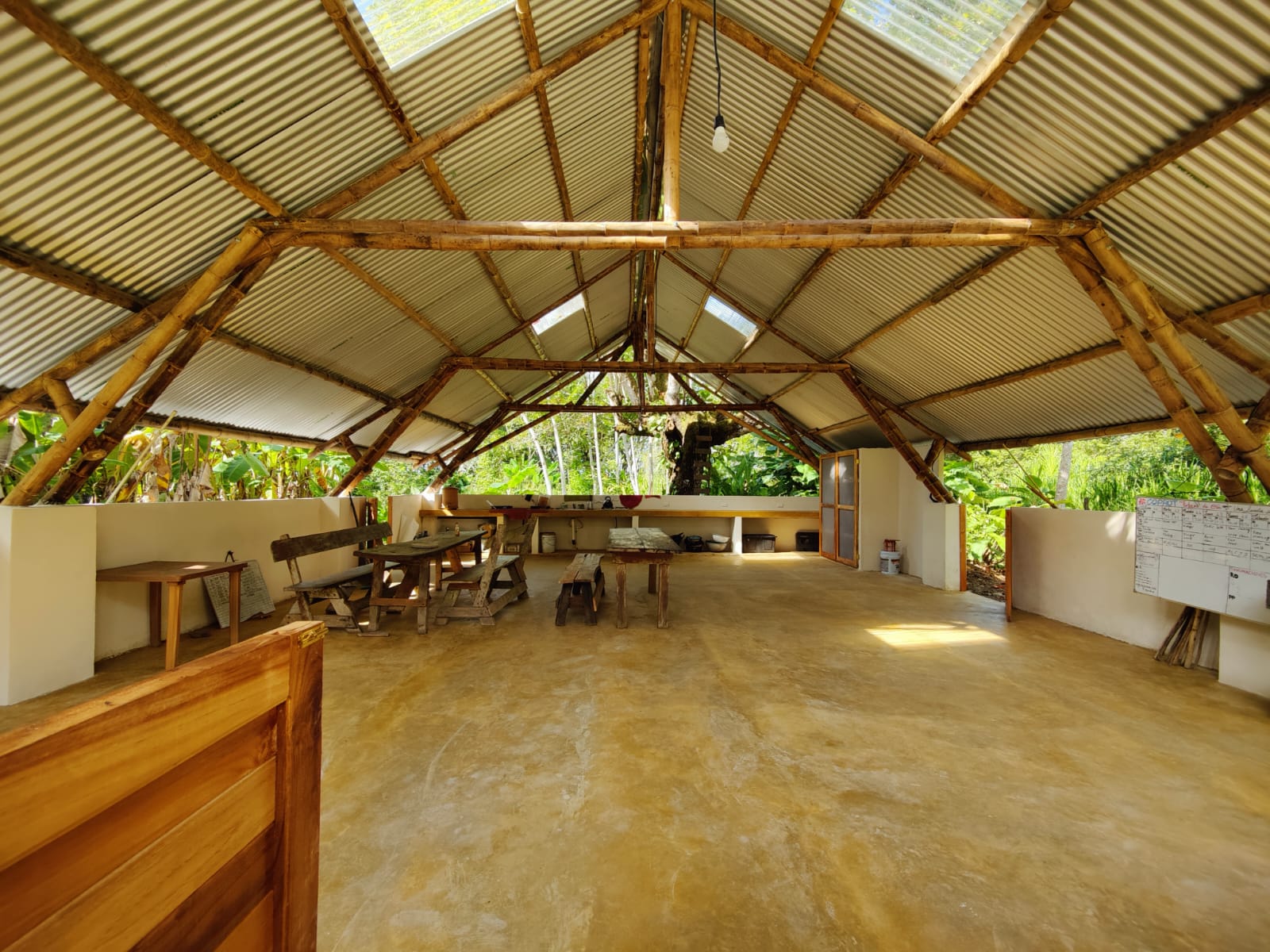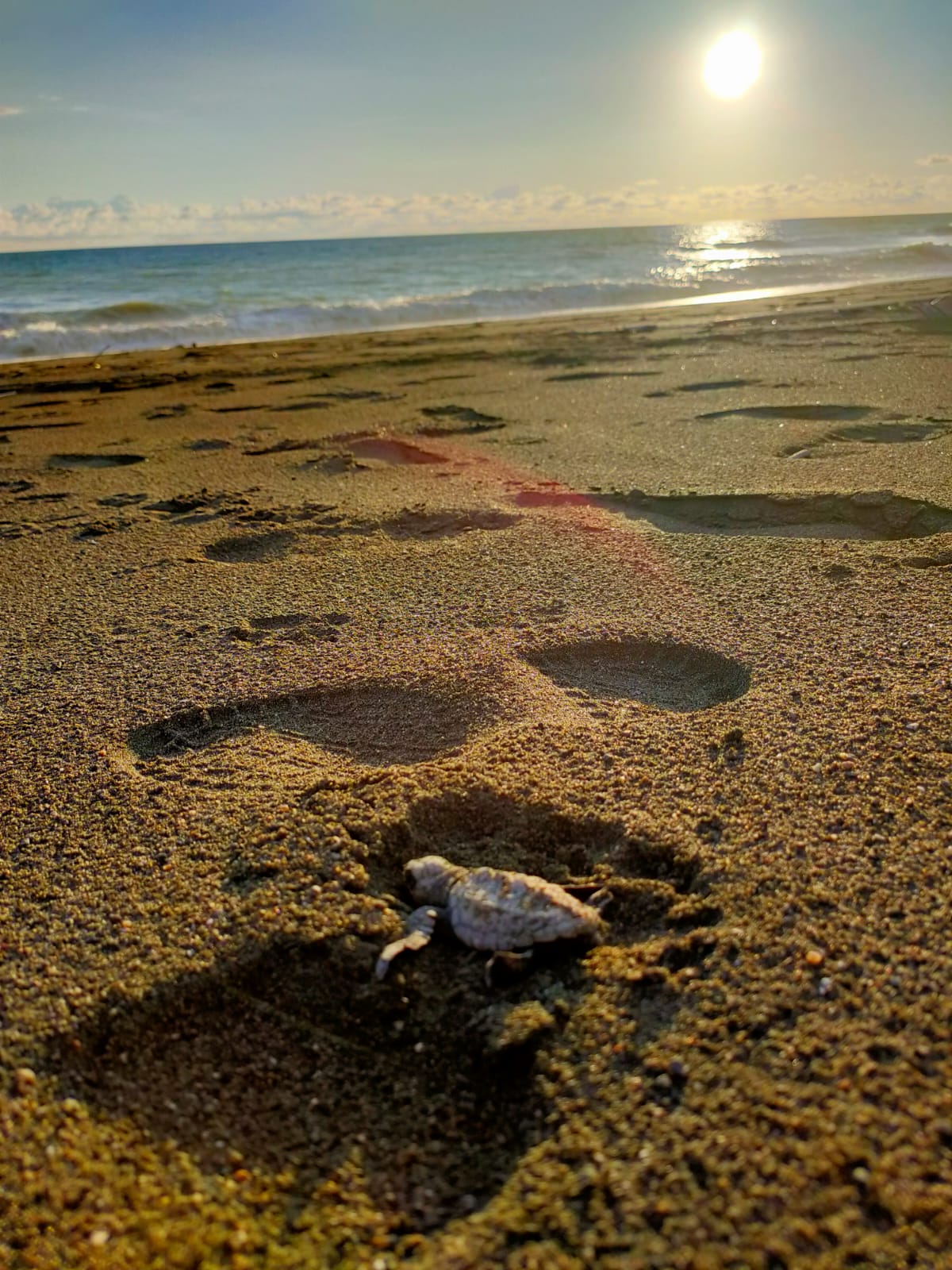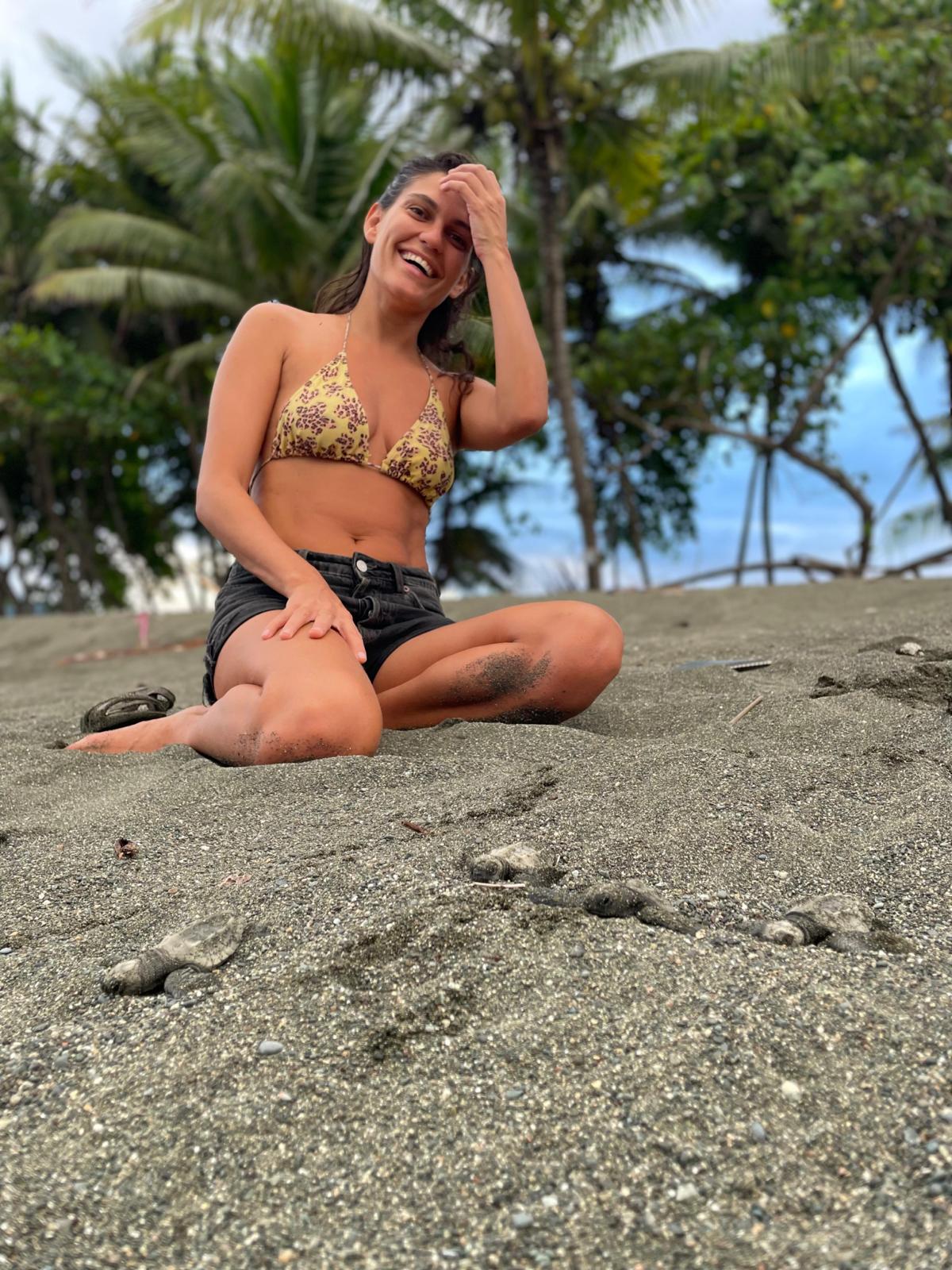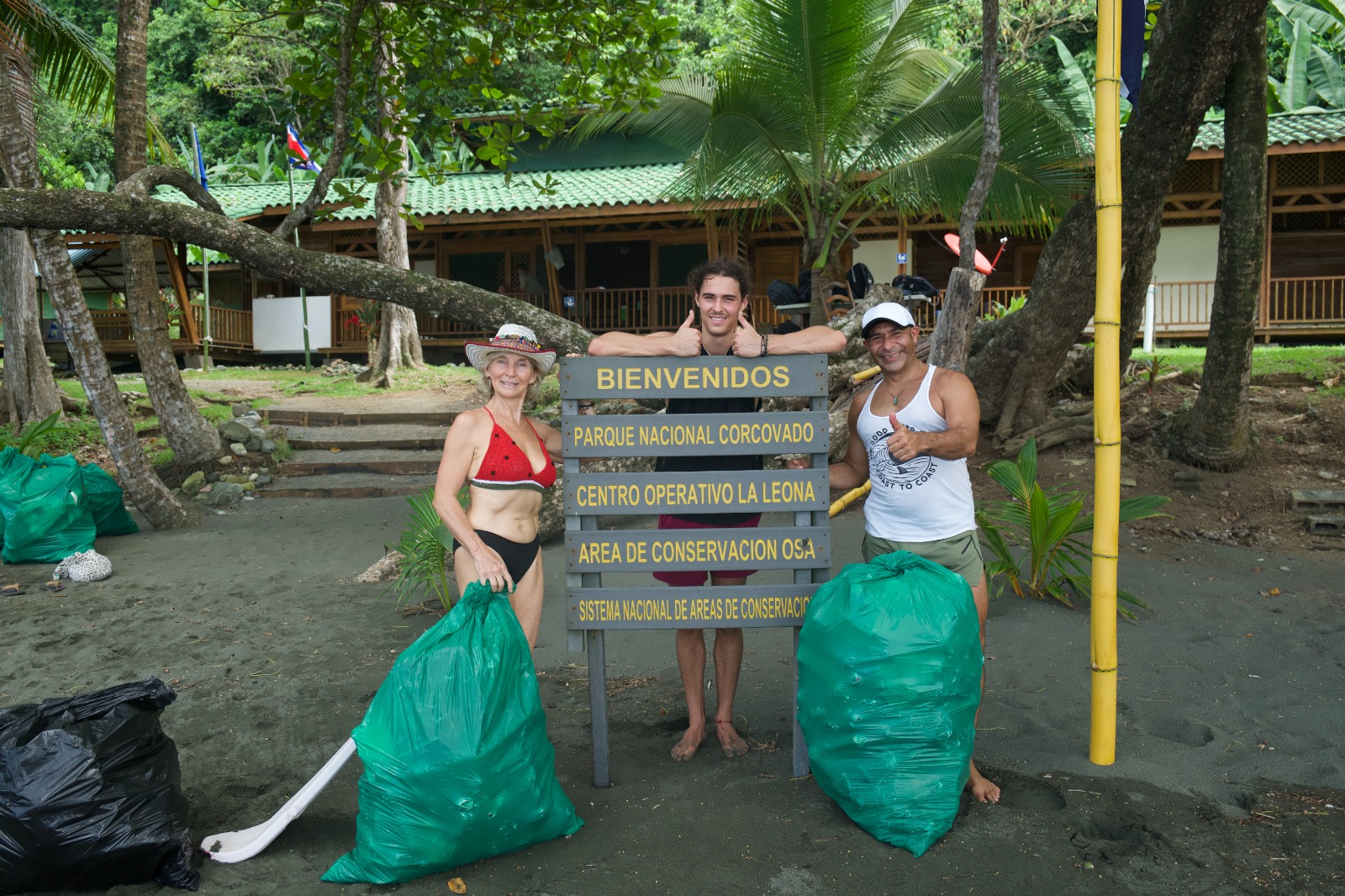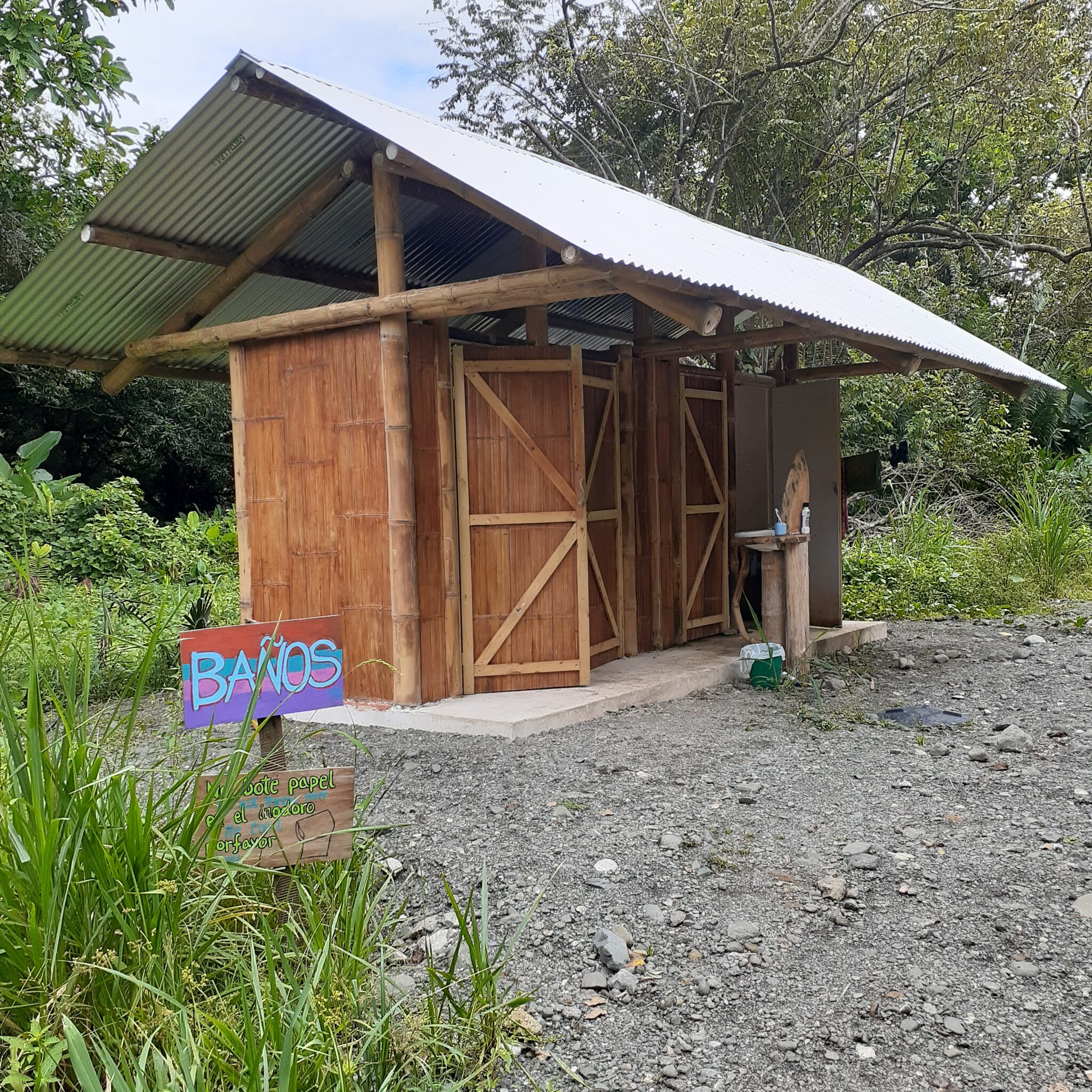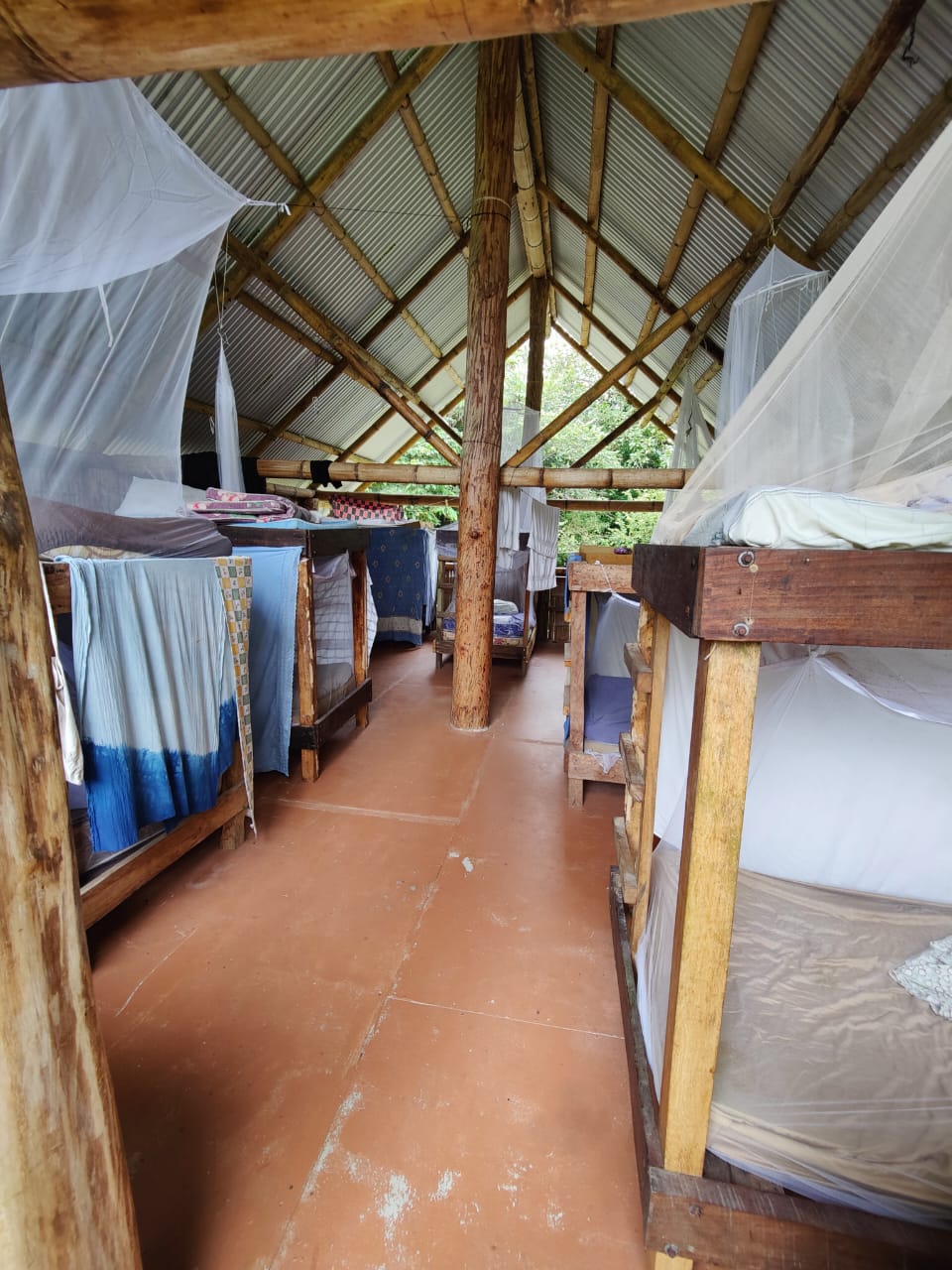Turtle study in Costa Rica, on the OSA peninsula. Join a sea turtle research station in one of the world's most biodiverse areas. All turtle programs here
Sea turtle survey in Costa Rica, on the OSA peninsula
The partner association was created in 2018 in response to environmental and social issues in the rural town of Carate, located on Costa Rica's Osa Peninsula. The beaches of Carate, Pejeperro and Rio Oro are home to the most nesting sea turtles on Costa Rica's Pacific coast. Around 7,000 nests are laid each year by olive ridley turtles (classified as vulnerable by the IUCN) and Pacific green turtles (classified as endangered by the IUCN).
20% of sea turtle nests are destroyed
However, high levels of poaching and predation have been recorded on turtle nests in the region, causing the destruction of almost 20% of nests.The Osa Peninsula is home to Corcovado National Park, which is known to harbor some of the richest biodiversity in the world. The economic development of the village of Carate over the last 25 years has been based primarily on ecotourism. This economic activity has not, however, led to any improvement in the quality of life of the local population, despite a few people finding jobs in ecolodges. As a result, many locals have turned to illegal or environmentally damaging activities to earn a living, such as gold mining, turtle nest poaching and hunting.
Nearly 10 km of protected beach
Faced with this realization, the COPROT association was created, with the aim of developing opportunities for the local population in conservation. Since 2018, the association and local communities have been working hand in hand, collecting data on sea turtles. In December 2022, the team expanded its research area by opening a second camp in Carate. Thanks to its activities, the partner association has created paid jobs, not only in conservation, but also in other projects such as construction, transport, catering and permaculture. The problem of stray dogs destroying the eggs has also been taken into account and resolved by the construction of hatcheries.
The association currently protects around 8 km of beach. The aim is to cover 15 km of beach. To achieve this, it needs ecovolunteers.
Take action for turtles in one of the world's most biodiverse areas
If you're looking for a project that lets you discover one of the most biodiverse places on the planet, meet and protect sea turtles every day, and get involved in the local community, this is the project for you!
Daily beach patrols
As a volunteer, you'll lend a hand to the research assistants. You'll take part in daily turtle patrols, either in the morning (3-5 hours) or at night (4-7 hours). During patrols, you'll protect new nests, record data on nesting females and release newborns! The beaches you'll be working on are home to some 7,000 sea turtle nests every year.
Ecovolunteers also take part in all the important tasks such as beach clean-ups, community events, plastic recycling, gardening and base camp maintenance. In the Carate camp, where the hatchery is located, you can take part in hatchery-related activities.
Other activities may be proposed depending on skills and length of stay, such as :
- Project development
- Social media and website management
- Developing ecotourism
- Fundraising/event support
Dates
- All year except May and June
- Arrival on Mondays
- The beaches of Carate and Pejeperro are lucky enough to welcome turtles almost all year round. However, the number of visitors depends on the species
- July to December: Olive Ridley turtle
- From October to March: green turtle.
- The busiest months for nesting and hatching are September to January.
Rates
- 290 per week for 2 weeks. Approximately €269 (varies according to exchange rate).
- 250 per week for 3, 4 and 5 weeks. Approximately €232 (varies with exchange rate).
- 200 per week for 6 or more weeks. Approximately €185 (varies according to exchange rate).
Included in price
- Food
- housing
- Framing
Not included in price
- Airline tickets
- Travel insurance
- Personal expenses
- From age 18
- From 2 to 12 weeks
- Language: English (intermediate level) and/or Spanish (intermediate level)
- Be physically fit: sea turtle monitoring can be quite physically demanding (lots of walking on soft sand). To collect the best possible data, the team works mainly early in the morning and late at night. This is a great opportunity to admire the night sky and watch the sunrise.
- The partner organization expects volunteers to support activities on the beach and other environmental tasks. This is not a vacation resort, but a conservation station!
- Be able to live in an isolated environment, far from the conveniences of the city.
- Withstand hot, humid weather.
- An interest in protecting endangered species
- Bring out the best in yourself!
Housing
The two camps, Rio Oro and Carate, are very basic, but have the privilege of being right in the middle of nature. You'll sleep in dormitories open to the outdoors. The beds are equipped with mosquito nets. Both camps have bathrooms with toilets and showers, as well as communal kitchens.
All buildings are constructed mainly from sustainable and/or recycled materials to minimize their impact on the environment.
Both camps have simple solar systems to provide a small amount of energy for lighting and recharging electronic devices.
Waste management
The team's aim is to create a "zero waste" camp. So everything must be reused, recycled or sent back to Puerto Jiménez. You are invited to reduce the use of plastic and to bring biodegradable soaps and shampoos if possible.
Food
The food is vegetarian. Meals are based on rice and legumes, fruit and eggs. Weekly cleaning of the facilities is carried out by a team.
Arrival
You must get to the camp on your own. The team will give you all the information you need. Costa Rica is a tourist country where it's relatively easy to get around.
First step: get to Puerto Jiménez from San Jose (where international flights land)
San Jose to Puerto Jiménéz can be reached by plane or bus.
Second step: get to the project. There is a colectivo (white Toyota 4×4), which makes the trip from Puerto Jiménéz to Carate and passes through the camp. It runs Mondays, Wednesdays and Fridays. At 6 a.m. and 1:30 p.m.
Volunteers are advised to arrive in Puerto Jimenez on Sunday so that they can catch the 1:30 p.m. bus
In order to arrive at camp on Monday afternoon, you will need to stay in Puerto Jimenez on Sunday evening. The team recommends that you stay at La Palapa Hut Nature Hostel.
During your free time, you will have the opportunity to explore the OSA peninsula.
Some activities can be organized (not included in the price). Please note, however, that the agencies organizing these outings are closed during the low season (October, November, December). What's more, days off are not always colectivo days, so you'll need to be able to put together a group to organize these outings.
- Visit to Corcovado National Park
- Surfing in Matapalo
- Riding
- Chocolate excursion
- Whale and dolphin excursion
- Hiking in the waterfalls
- Guided tour of the gold mine
There are plenty of free activities: night walks, jungle hikes, beach clean-ups, game and movie nights, pizza parties and more.
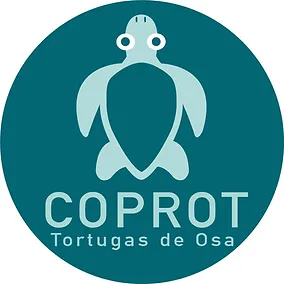
About the partner association
COPROT tortugas de OSA is an association for the conservation and study of sea turtles on the OSA peninsula in Costa Rica, created in 2018. Its work takes place on the most important nesting beaches in the South Pacific. Over 7,000 nests per season for the Olive Ridley and Pacific green species have been recorded on 8 km of undeveloped beach. COPROT tortugas de OSA works closely with the local community and implements a number of social and environmental projects (beach clean-ups, plastic recycling, environmental education, etc.) It calls on ecovolunteers to support the project.

